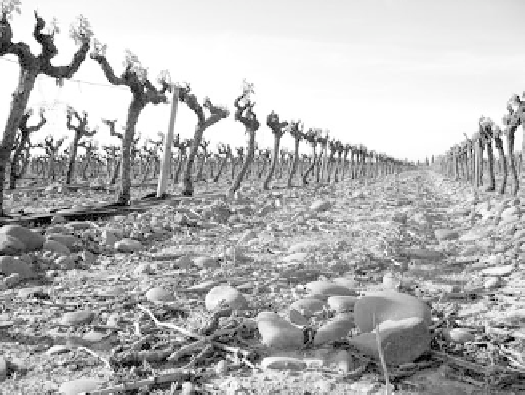Geoscience Reference
In-Depth Information
Being harder than the others, the siliceous fragments get
concentrated. Some are reduced to their sandstone outlines. They
provide, in the B horizons, friable pebbles similar to pumice
stone, like ghosts become light. Later, this residue yields fine
sand. Quartz pebbles are more resistant. On the Villafranchian
surfaces, quartz is concentrated on the surface where the elements
end up in contact with each other as in the famous Châteauneuf-
du-Pape vineyard. But even they happen to rupture along the
planes of weakness that they carry. They then resemble sausage
slices. Lastly, they are pulverized and yield gravels. Their evolu-
tion is not inconsequential: they form a sort of surface protection
without which the clays would have eroded away and develop-
ment of soils would be limited (Fig. 9.5).
Fig. 9.5
Accumulation of quartz pebbles on the surface of the soil in the vineyard of the
Costières de Nîmes;
photo
: author.
These observations on the siliceous elements have been confirmed by
Bech-Borras
et al
. (1982). In the soils of Catalonia (Spain), the corrosion
of quartz is zero in the altérite at the base of the soils (C horizon)
and scarcely noticeable in the middle of the profile (B horizon) but
considerable with holes made through the mineral when the surface of
the soil is reached (A horizon).
Various studies conducted in Spain, Morocco, Lebanon and France
(Verheye
et al.
1973; Bornand 1978; Bech-Borras
et al
.
1982; Delgado
et al
.
1990;
Michalet 1991…)
lead us to the following attempt at synthesis:
Evolution of the clays

